How do I create an invoice?
In Bokio’s Invoice section, you can easily create and send invoices directly to your customers. This is also where all invoice events will be recorded.
To start creating an invoice, go to Invoicing in the left-hand menu and click New invoice. You can also click on the arrow next to it and select Create a new cash invoice or credit note.
Step 1: Upload your company logo
If you haven't already uploaded your company logo under settings, you can do so by clicking on "...".

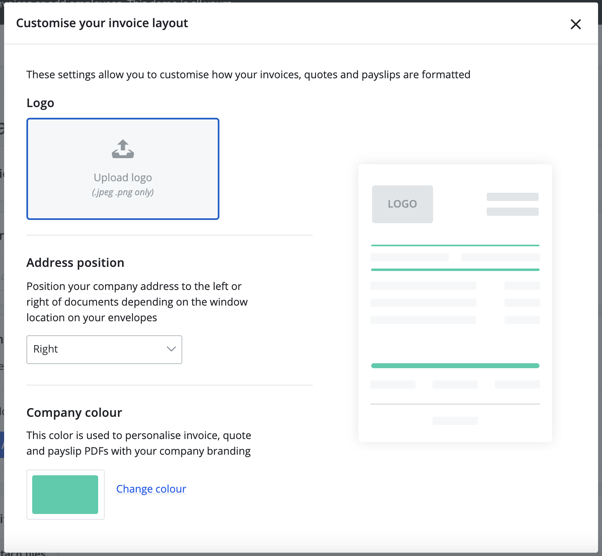
Step 2: Edit company settings
The company information is pre-populated if you’ve entered this under Settings. If you’re creating your first invoice, you need to enter the payment details for domestic and international payments. To do this, click Edit.

You can currently select only one domestic payment method and one international payment method. If you want to add multiple payment methods, you can do this by using Add text.
To offer your customers the ability to pay quickly and easily online by card, you can use our Stripe integration.
If you add both domestic and international payment details, the domestic payment details will be stated on invoices to UK customers and the international payment details on invoices to customers abroad. This is adjusted automatically depending on the customer’s settings.
To apply reverse-charge VAT in respect of sales to customers abroad, you must enter the correct VAT number for your own company and your customer’s company.
Step 3: Add or create new customer
If you’ve already added customer information, you can choose one from the list. If not, create a new customer by clicking Create new. You can create UK and overseas customers. Find out more about how to add a customer here.
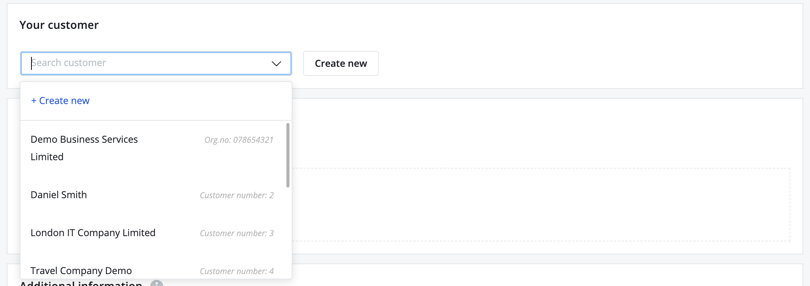
Step 4: Add items and services
Now it’s time to add items and/or services to the invoice. Click Add new row to get started.

If you’ve previously added items or services, you search for them in the search field or use the list. You can also create a new item or service.
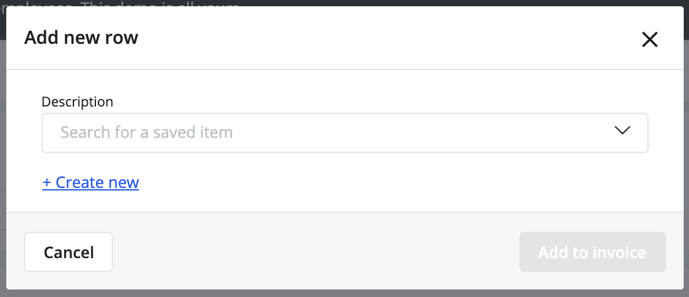
Create a new item by entering the item name. Enter the quantity, unit, price, VAT rate, and whether it is goods or services. To save the item for future use tick the box Save as item. To add the item to the invoice, click Add to invoice.
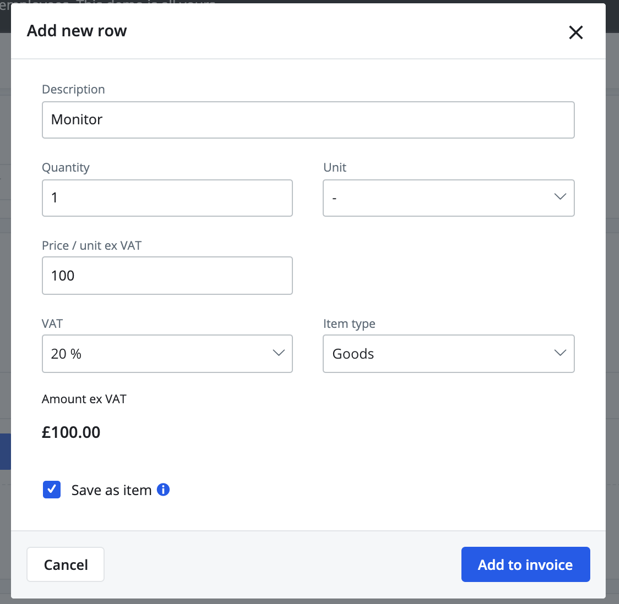
Add additional text
In addition to items and services, you can Add text or import time reporting from Toggl by clicking “...”. Lines of text can contain information that there isn’t space for in any of the other invoice settings, such as additional payment details.
Select currency
In Bokio, although everything is recorded in British pounds, you can invoice your customers in another currency.
If you choose a currency other than GBP, the current exchange rate is calculated and registered when you enter the invoice or when payment is received.
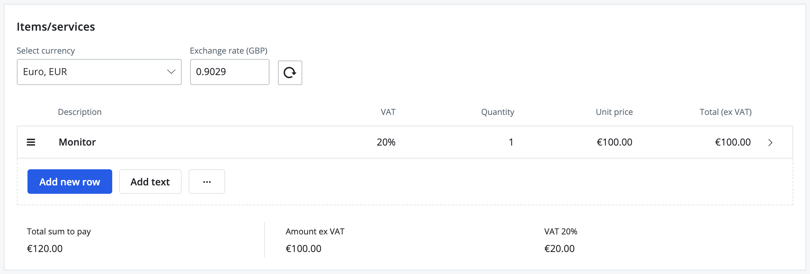
Show with VAT
By activating the Show with VAT toggle all invoice rows on the invoice will include VAT.
Additional information
You can add additional information to your invoices, like order reference or delivery address by clicking Additional information. You can also attach any relevant files by clicking Attach files.
Step 5: Invoice settings
Payment terms are retrieved from the customer’s settings, you can change them by editing your customer, or temporarily on this edit by changing the due date.

Step 6: Preview and publish invoice
Before the invoice is sent to the customer and published to your records, you can, if you wish, preview it.
Please note that an invoice isn’t given an invoice number until it is published.
Send your invoice
Once you're ready, you can select a delivery method for your invoice. With Bokio you have the option to send an email directly to your customer, with either a link or an attached PDF version of the invoice. Fill in your customer's email, write a personal message if you wish, and select Send and publish.
If you have added Stripe payments to your invoice, instead of a link to download the invoice PDF your customers will have a link to an invoice portal where they can view and pay the invoice.
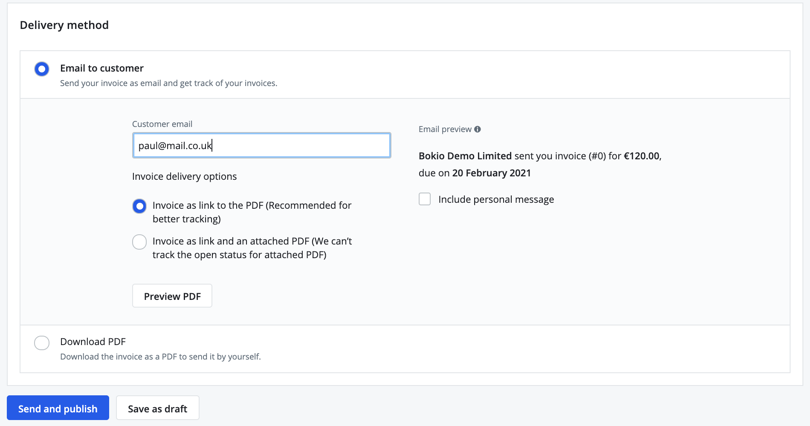
If you’d rather download the invoice as a PDF to then send to your customer, click Download PDF then Download and publish. This can be a good option if, for example, you want to send an invoice to multiple email addresses as this is not supported in Bokio at this time.
Track your invoice
Once the invoice has been published, you will be redirected to the invoice summary page, which will show you the date the invoice was published, the delivery history and accounting history.
The invoice in the example was sent to paul@mail.co.uk on 30 January 2020. The delivery status is “Sent”. This means that the invoice has been successfully sent to the specified email address. If the invoice could not be successfully delivered to the recipient for any reason, the invoice status will show “Failed”.

If the invoice has been opened by your customer, the delivery status will show “Invoice opened”. The email status will update automatically and can also be viewed in the Invoices page. It's a good idea to keep track of these to make sure all invoices have been delivered.
When the invoice has been paid by your customer you can Register payment on the Invoice page. If you have a bank feed you can connect it to an imported bank transaction.
Step 7: Recording invoices
Once an invoice has been saved and published for the first time in Bokio you can choose to record your invoices automatically or not.
We recommend that you activate this feature if you also do your bookkeeping in Bokio. If you only use Bokio as an invoicing software then you shouldn't activate this feature.
If you change your mind about the decision you made on the pop to up you can change this by going to Settings → Invoices and choose Automatic recording.
If you use the accrual (invoice) method, you must record when the invoice is sent and when it is paid. When using the cash method, the invoice needs to be recorded only on the date it is paid by the customer.